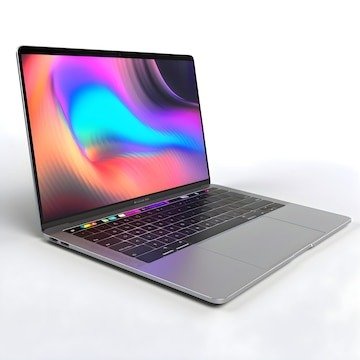Where Did Microsoft Take the Iconic Logo Photo of Clouds?
The Windows XP default wallpaper, also known as “Bliss,” is arguably one of the most iconic images in technology history. Millions of people worldwide have seen it, with its serene, green rolling hills under a perfectly blue sky and fluffy clouds. But where did Microsoft take this iconic logo photo of clouds?
What Are Examples of Effective Team Dynamics?
The Origin of the “Bliss” Photo
The “Bliss” photograph, taken by professional photographer Charles O’Rear, is actually a real photograph and not a digitally created image. O’Rear took the photo in January 1996 while driving through Napa Valley in Northern California. This region, famous for its wineries and picturesque landscapes, provided the perfect setting for what would become a timeless image.
O’Rear was on his way to visit his then-girlfriend when he decided to pull over to capture the breathtaking view. He used a medium format Mamiya RZ67 camera with a tripod and shot the image on Fuji Velvia film, known for its vivid color reproduction.
The Health Hazards of Prolonged Sitting: What You Need to Know
The Journey to Becoming an Icon
After capturing the image, O’Rear submitted it to Corbis, a stock photo agency owned by Bill Gates. Originally titled “Bliss,” the photo caught Microsoft’s attention while searching for images for their upcoming Windows XP operating system. The photo’s simplicity and tranquility made it an ideal candidate for the default wallpaper, embodying the user-friendly and serene experience Microsoft wanted to convey with XP.
Microsoft purchased the photo from O’Rear, and the rest is history. The image was slightly edited to remove some imperfections but remained largely true to its original form.
The Impact of “Bliss”
The “Bliss” photo became synonymous with Windows XP, one of Microsoft’s most successful operating systems. Windows XP was released in 2001 and quickly gained popularity for its stability, ease of use, and improved user interface. The default wallpaper played a significant role in shaping the user’s first impression of the operating system.
The image has been viewed by over a billion people worldwide, making it one of the most viewed photographs in history. Its impact extends beyond just being a wallpaper; it has become a cultural icon, representing the early 2000s and the dawn of a new era in personal computing.
The Legacy of “Bliss”
Even years after its release, “Bliss” continues to hold a special place in the hearts of many. The image has inspired countless parodies, remakes, and tributes. Photographers have attempted to recreate the scene, while digital artists have transformed it into thematic renditions.
In 2017, O’Rear revisited the concept by shooting new images for a “New Angles of America” project sponsored by Lufthansa. These images aimed to evoke the same sense of serenity and beauty as “Bliss,” demonstrating the lasting influence of the original photo.
The Importance of Stock Photography in Branding
The story of “Bliss” highlights the importance of stock photography in branding. High-quality, evocative images can significantly impact a brand’s identity and user perception. For Microsoft, choosing the right image helped create a welcoming and positive experience for Windows XP users.
Stock photos offer businesses the opportunity to convey their message and values visually. They can enhance marketing materials, websites, and user interfaces, making them more engaging and appealing. The success of “Bliss” underscores the value of investing in quality photography and its potential to become an integral part of a brand’s legacy.
The Technical Aspects of “Bliss”
The technical quality of “Bliss” also contributed to its success. The photo’s composition, lighting, and color balance create a harmonious and visually pleasing image. The medium format camera used by O’Rear provided high resolution and detail, ensuring the image looked sharp and clear even on large screens.
The choice of Fuji Velvia film, known for its saturated colors, enhanced the vibrancy of the green hills and blue sky. This choice of film played a crucial role in making the image stand out and capture viewers’ attention.
The Evolution of Default Wallpapers
Since the release of Windows XP, default wallpapers have continued to evolve. Each subsequent version of Windows has introduced new images designed to reflect the aesthetic and technological advancements of the time. However, none have reached the iconic status of “Bliss.”
Windows Vista featured the “Aurora” wallpaper, which showcased a more modern and abstract design. Windows 7 introduced the “Harmony” wallpaper, combining natural elements with a digital twist. Windows 10 brought in a series of images called “Hero,” which included dramatic landscapes and cityscapes.
Despite these efforts, “Bliss” remains a standout due to its simplicity, beauty, and the nostalgia it evokes for many users.
The Cultural Significance of “Bliss”
Beyond its technical and aesthetic qualities, “Bliss” holds cultural significance. It represents a time when personal computing was becoming more accessible and user-friendly. Windows XP marked a shift towards more intuitive interfaces and better user experiences, and “Bliss” was a visual representation of this shift.
The photo also reflects a sense of optimism and tranquility, resonating with users during rapid technological change. It provided a moment of calm in the fast-paced world of computing, reminding users of the beauty and simplicity of nature.
Final Thoughts
The story of where Microsoft took the iconic logo photo of clouds is a testament to the power of photography in shaping technology and culture. “Bliss” is more than just a wallpaper; it is a symbol of an era and a reminder of a single image’s impact.
Questions and Answers
Q1: Who took the “Bliss” photo?
A1: The “Bliss” photo was taken by Charles O’Rear, a professional photographer.
Q2: Where was the “Bliss” photo taken?
A2: The photo was taken in Napa Valley, Northern California.
Q3: What camera and film were used to take the “Bliss” photo?
A3: O’Rear used a medium format Mamiya RZ67 camera and Fuji Velvia film.
Q4: How did Microsoft acquire the “Bliss” photo?
A4: Microsoft purchased the photo from Corbis, a stock photo agency owned by Bill Gates.
Q5: Why is the “Bliss” photo significant?
A5: The photo became the default wallpaper for Windows XP, one of Microsoft’s most successful operating systems, and one of history’s most viewed photographs.
Useful Keys: Bliss photo, Charles O’Rear, Windows XP wallpaper, Napa Valley, iconic images, Microsoft, stock photography, digital photography, Windows operating system, cultural significance.










